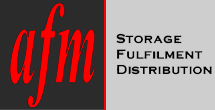How to Keep Your Distribution Costs Down
 Getting your product to customers can be expensive and difficult, and particularly so when your customer base grows further afield. However, there are ways of keeping your distribution costs down while maintaining a high level of customer loyalty, and without compromising on the value you offer. Here are some starting points for any business.
Getting your product to customers can be expensive and difficult, and particularly so when your customer base grows further afield. However, there are ways of keeping your distribution costs down while maintaining a high level of customer loyalty, and without compromising on the value you offer. Here are some starting points for any business.
1. Accurate Inventory Information Systems
With the high expectations of today’s customer, this is a must. Companies using separate inventory management and business management systems will experience time consuming reconciliation work and an increased risk of errors from manual data entry; a poor start to any efficient business process. On the other hand, an integrated business management solution, which includes bar codes and scanners, can help you start on the right foot. You’ll receive real-time information to help you maintain an accurate inventory, reduce potential errors and implement efficient business processes.
2. Customer Transparency
This follows on from the above point and is an absolute must for today’s customers. By implementing an integrated business management solution, you are able to “see” the inventory, wherever that may be, and consequently provide a better service to your customers by predicting delivery dates, tracing the progress of orders and tracing lot or serial numbers for recall, warranty or quality control.
3. Smarter Working
This is a no brainer. Reduce lead time by specifying that fast moving goods are put where you can easily get to them and slow moving items in the back of the warehouse.
4. Analyse Your efficiency
Benchmarking and adopting best practices can boost efficiency significantly. Key Performance Indicators to keep an eye on are:
• Working capital turnover or length of operating cycle – the shorter the better (i.e. more profitable)
• Lead times – important for customer satisfaction as well as improving sales
• The variability of lead times – customers want consistency and predictability
By having access to the above data you can determine the competitiveness of distribution processes within your organisation.
5. Accountability
Accountability comes from effective leadership, clear communications and efficient systems and equipment to enable productive operations and a fulfilling work environment. It requires establishing standards, identifying improvement opportunities and measuring performance. A reward process should be tied to something that can be quantified as a true benefit to the organisation.
Remember that the business rules and distribution processes that you set up in your system can have a positive effect on your entire organisation, which ultimately can increase efficiency, reduce costs and benefit your customers.
This entry was posted onTuesday, October 28th, 2014 at 12:07 pm and is filed under News. You can follow any responses to this entry through the RSS 2.0 feed. You can leave a response, or trackback from your own site. Both comments and pings are currently closed.
